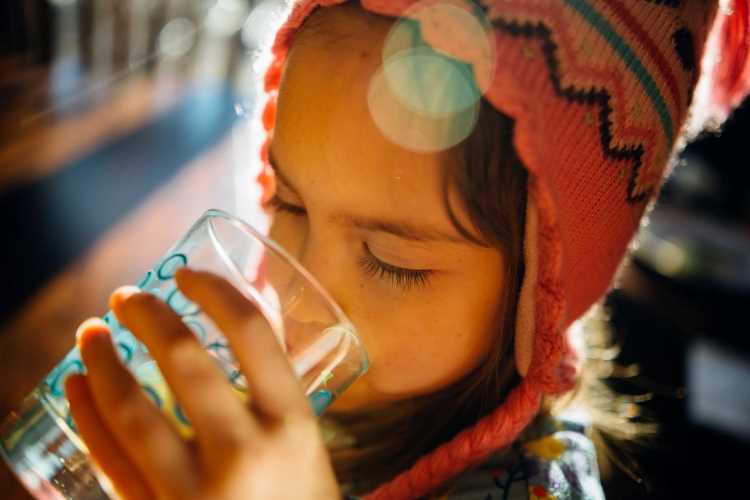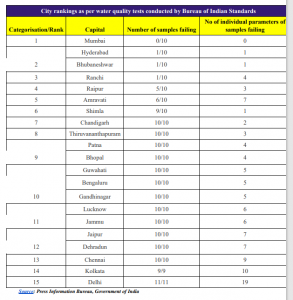
Jal Jeevan Mission: The NDA government created the Jal Shakti ministry in 2019 to ensure sustainability of water supply through conservation of rural water resources and groundwater recharge. The government identified 1592 critical and over-exploited blocks spread across 256 districts as the focus of Jal Shakti Abhiyan. According to government data, the per capita water availability has dropped to 1,400 cubic metres from 5,000 cubic metres in 1950.
In 1972, the Union government started giving financial assistance to states for providing water supply in rural areas under the Accelerated Rural Water Supply Programme. In 2009, the programme was renamed as National Rural Drinking Water Programme (NRDWP). The objective of NRDWP was to enable all households to have access to safe and adequate drinking water within their premises. This was a centrally sponsored scheme, but the state government also used to fund it partly.
However, NRDWP was restructured and subsumed into the Jal Jeevan Mission (JJM) to provide functional household tap connection (FHTC) to every rural household (Har Ghar Nal Se Jal) by 2024. As per the information available with the department of drinking water and sanitation (DDWS), only 18.33% of rural households (3.27 crore out of the total 17.87 crore rural households in the country) had piped water connection in 2019.
From hand pumps to tap water connection
Providing water to all rural households in the country has been a long journey. Jal Jeevan Mission focuses on FHTC as a drinking water source for rural India. Several attempts were made to make water accessible in rural areas. In mid 1960s, there was a devastating drought in the country, and the government sought UNICEF help to improve access to water through borehole drilling. An emergency borehole drilling campaign flourished to improve rural water accessibility. Though, things changed in 1974 and hand pumps came into the picture. The three-hand pumps drastically revolutionised rural water supply.
READ ALSO: Jal Jeevan Mission takes off, but drinking water for all still a distant dream
A National Statistical Office (NSO) survey finds that almost 43% of households use handpumps as their fundamental source of water. At the same time, almost 41% of urban households rely on piped water as the fundamental source.
However, the quality of groundwater accessible through handpumps is still questionable, a total of 324 sources of drinking water were field surveyed to assess the prevalence of contamination risk based on World Health Organisation (WHO) sanitary inspection guidelines, their results show that 37.7% of all community-based tube wells with handpumps in rural areas were unsafe. Unfortunately, 28.7% of samples were found infested with medium, high or very high-risk levels out of the total samples surveyed.
Drinking water crisis in India
The poor quality of groundwater represented by hand pumps created mistrust among the rural population. They often look up to piped water supply similar to urban areas. The government aims to provide 90% of rural households with piped water and 80% of rural households with household taps by 2022. Providing piped water supply (PWS) is a prerequisite for tap water connection. Around 47.28 % of rural households are provided access to piped water supply as of February 22.
Even in urban areas, there is a gradual deterioration in the quality of water. The water filtration plant might be of high quality, but most of the last mile pipeline networks are poorly maintained. With non-continuous water supply, pipes are fully pressurised for only a couple of hours daily.
During the long no-supply hours, groundwater seeps into the pipes and sullies water flow when the municipal water supply is resumed. A study conducted by the Bureau of Indian Standards in 2019 on water quality tests for the selected state capital of the country shows that the government needs to act immediately on the deteriorating quality of urban water supply.

Due to the lack of availability of piped water supply, people use borewells and other sources. At least 48% of India’s urban water supply comes from groundwater. Very little information is available on the quality of borewells and other water sources. This has led to a trust deficit for tap water even in urban areas.
The deteriorated quality of piped water supply, along with lack of information on borewell water quality, has forced people to believe that the water directly from the tap is not drinkable, and needs to be treated by a household water filtration system before drinking. Hence, people in urban areas end up giving R-O treatment to both borewell and piped water as they believe direct tap water is not consumable.
Jal Jeevan Mission: The way forward
Therefore, the key challenge for Jal Jeevan Mission is not only complying with the policy provision of safe drinking water by ensuring efficient delivery and quality check but it is also about convincing people to drink from tap water.
The behaviour of using borewell water via tap for general purpose except drinking is common in urban areas, as borewell water is not filtered at first place it can be used for general purposes. But this has a lot of impact on the behaviour of people in rural areas, as they may consider FHTC under Jal Jeevan Mission as a source of water for general purpose and continue the practice of getting drinking water from community water sources.
Puri in Odisha has become the first Indian city to provide 24*7 safe drinking water from taps for households. The project ‘drink from the tap’ was started in 2017 under the mission SUJAL for universal coverage of tap water in every household. ‘Drink from Tap’ looks to ensure that the water received at the consumer tap can be directly used for drinking and cooking purposes without any need for further filtration/boiling/treatment.
The assured water quality standard 30 other parameters were set including chemical and metal content, water treatment and storage reservoir IoT-based real-time monitoring of water supply quantity and quality etc. to avoid water-borne diseases. Puri has also established decentralisation by launching Jalsathis, an all women crew to facilitate new connections, field water quality testing, reading water meters, distributing water bills, collecting user charges and sensitising people on water conversation. A chlorine dosing system with automated programmable logic controllers (PLCs) is installed to ensure appropriate water quality at the consumer end.
A capital investment is needed to provide clean drinking water and for related infrastructure. It is also important to ensure an efficient delivery system alongside spreading awareness and capacity building of relevant stakeholders.
JJM’s effort to decentralise the implementation consists of empowering citizens to monitor water quality. Rural communities and women are empowered to use field test kits to monitor water quality at the community level. The Jal Shakti ministry has introduced the Water Quality Management Information System (WQMIS), a portal that allows people to register, book and get their household water tested by paying a nominal fee. The decentralised nature of JJM may help bridge the trust deficit among people about the quality of tapped water supply.
(Shiv Chhatrala is a master’s student at Christ University, Bangalore.)

